Why bear watching is better when you see no bears

In some ways, going on a bear hunt is exactly how I’d imagined it would be. Approaching a clearing at the edge of a forest, I’m instructed to creep on tip- toes, avoiding the menacing crunch of leaves which could be loud enough to send a Marsican brown running for the hills. I can’t help but wave my arms back and forth to keep my balance as I tread lightly, inadvertently doing my best clown impression.
“A broken twig could do it,” warns Andrea, my guide, piling on pressure. I start to consider stopping breathing entirely to increase our chances of achieving silence and as a result, arriving face-to-face with a big fluffy fellow like the one I imagined as a child when I read “We’re gong on a bear hunt.”
I’m in Italy’s Abruzzo Mountains with the Much Better Adventures travel company, two- and-a-half hours north of Rome by transfer in an area so remote that international tourists are a rarer sight than bears. Locals probably have their binoculars pointed in my direction instead of at the wildlife. “Dio mio,” they’d shreak: “Un inglese nel Abruzzo!”
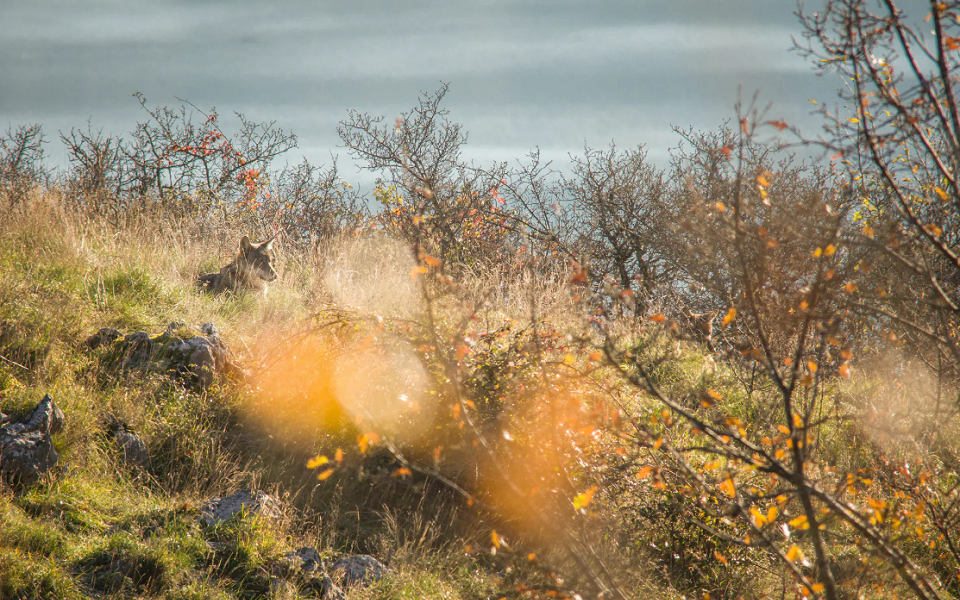
Not many Italians visit this remote region either – except keen hikers. Walking through Abruzzo’s Pescasseroli village is an arrestingly authentic experience, especially in October when the Italian tourists have gone home. In Pescasseroli, a beer, two glasses of wine and a coffee in the central square costs $13 and an incredible ravioli at A Cav’ut restaurant comes with a complimentary side of banter from the genial owner. But every time I look up and out, away from the town’s pretty buildings, I’m reminded why I’m here: to get into the mountains that soar on every side.
Wouldn’t standing in one spot looking at craggy rock be boring? Not at all: the privilege of being ‘allowed’ to stand and do nothing in silence is intensely moving
I’m not just here for the thrills. Over the past ten years, Abruzzo has been a triumphant rewilding success. The national park has created wildlife corridors to the north to increase biodiversity in plants and animals, strengthening the natural ecosystem and providing a blueprint for other countries looking at rewilding initiatives.
The term relates to the process of introducing animals back to their native environments and similar experiments are happening in the UK. Of the 70 Marsican brown bears in Italy, 20 have recently been sighted out of Abruzzo, a sign that the corridors are working and the animals feel comfortable lumbering over to new territories.
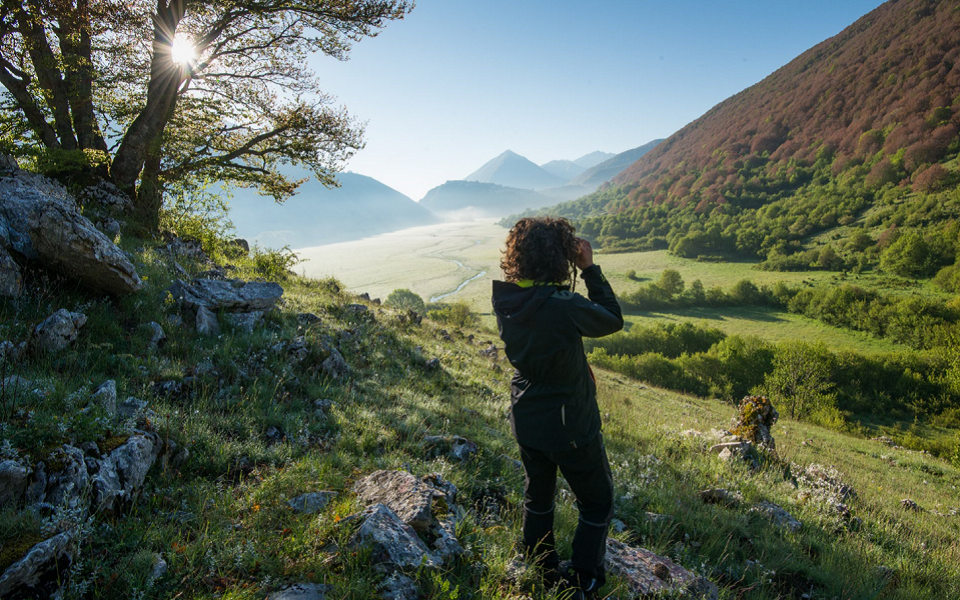
Bears need giant swathes of land to breed, hence the corridors, and amazingly, numbers are going up, an incredible symbol of success. Excitingly for me, being on this bear watching trip will help sustain projects to protect the bears and other animals like wolves further.
Abruzzo and the new corridors are the last place in Western Europe where bears are wild. Bears and wolves have been part of the ecological landscape “forever,” Andrea tells me the following morning over a headache-inducing 6am rise for breakfast in the retro Hotel Iris’ restaurant which doesn’t look like it’s been updated since 1970s. (And it looks fabulous for it.)
“A beautiful beast!” shouted Andrea. Just in sight through binoculars was a silver-grey slug-like shape in the bottom of a rough sand pit by the fringes of the forest
The one plus point to being jolted awake by my alarm clock is the sponge cake and jam I’m encouraged to scoff. The idea is that the complex carbs will fuel a day of hiking and at shortly before 7am we pull up after a 20-minute drive on the edge of a cliff as the sun threatens to brighten the dimness of the pre-dusk.
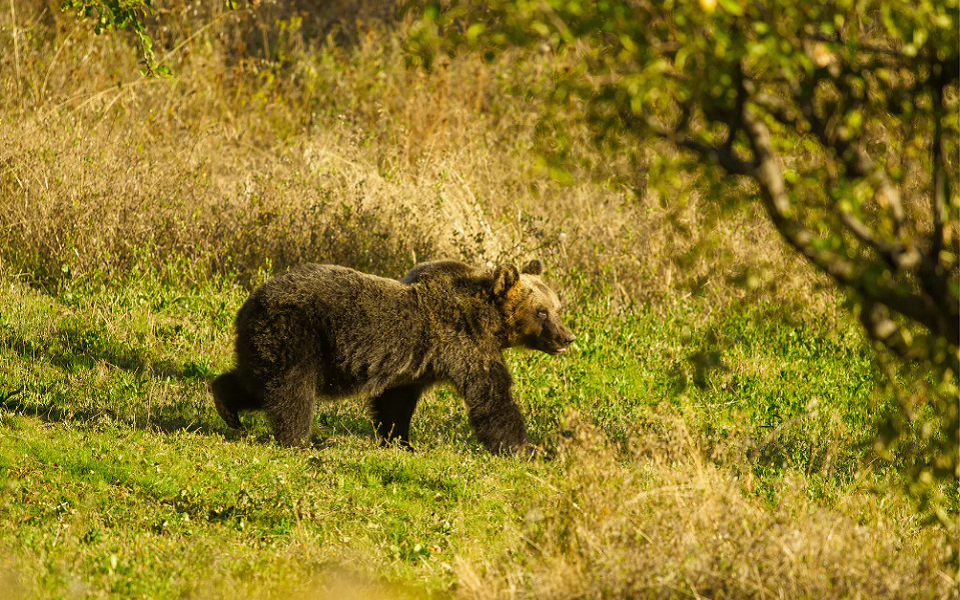
We creep across the bush and get comfortable with our hoods up and three jackets on to stave off the cold. We’re glancing across the valley to a mountain on the opposite side where wolves hunt roe deer. Bears and wolves are nocturnal so the best chance for humans to see them with the naked eye is one hour at dusk and dawn when they’re creaking into action or getting ready to tuck up for bed.
A newbie to wildlife watching, I feared I wouldn’t concentrate for two hours. Wouldn’t standing in one spot looking out at craggy rock be boring? Not at all: the privilege of being ‘allowed’ to stand and do nothing, in silence, with like-minded folk, is intensely moving.
After half an hour, you actually start to feel part of the environment. My place in nature felt shifted. I was still a voyeur, like if I were watching animals from a car window at a Disneyfied safari park, but something had changed. I felt, what’s the word? Relaxed? Certainly more at peace. “Staring at things is never time wasted,” wrote the essayist Diana Athill. It had never felt more profound.
We saw claw marks, bear hairs from where they rub against trees like Baloo in The Jungle Book and we even saw fresh scat
After a midday visit to the cheeky ravioli purveyor – and wine merchant – I was trekking past bushes full with ripe buckthorn berries popular with bears, even picking the odd one to enjoy the aromatic taste. We were on a gentle incline into the deep forest and the pastures on either side were lightly green-yellow with the turning seasons. In the forest the only toilet was the ground and our instinct to wait for the group to walk ahead before we weed was a reminder we hadn’t entirely assimilated with nature.
After a few hours’ hiking, sometimes up through winding and steep charcoal-coloured gorges, sometimes through beech forests, we stopped in a fantastic clearing. Open spaces are perfect for bear watching because you can actually see the animals on plains unlike when they’re hidden in forests. It’s obvious, really, when you know. Andrea, reminding us to be silent, waved his arms for us to sit, where we remained for more than an hour as our long vision began to falter as the light diminished into night.
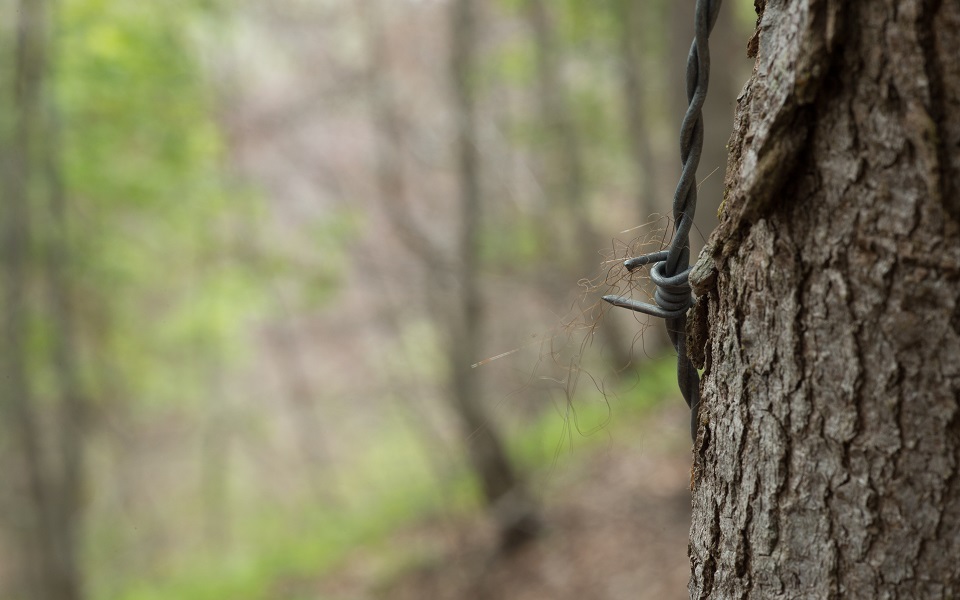
My hopes were fast fading but then Andrea beckoned us silently forward forty metres and around a bit to the right. He couldn’t find the right words in English quickly enough but had begun interchanging his binoculars and his long-lens camera frantically. It seemed like he was trying to get a better view as the light sank further. That the animals appear as the light goes feels incredibly cruel, but at least it focusses your attention.
“A beautiful beast!” shouted Andrea. Just in sight through binoculars was a silver-grey slug-like shape in the bottom of a rough sand pit by the fringes of the forest. It was a pair of wolves, and through the camera, they danced, making interesting shapes with their bodies as they explored the land with their first sniffs of the day.
I couldn’t see them with the naked eye but we multi-tasked, keeping our eyes on the wolves as we communicated with one another in broken language – “Left a bit! Down a bit! – helping each other spot the creatures before they faded into the night. Two hours of serenity, of sitting calmly and breathing, had been so sharply cut by the excitement of what we had come here for.
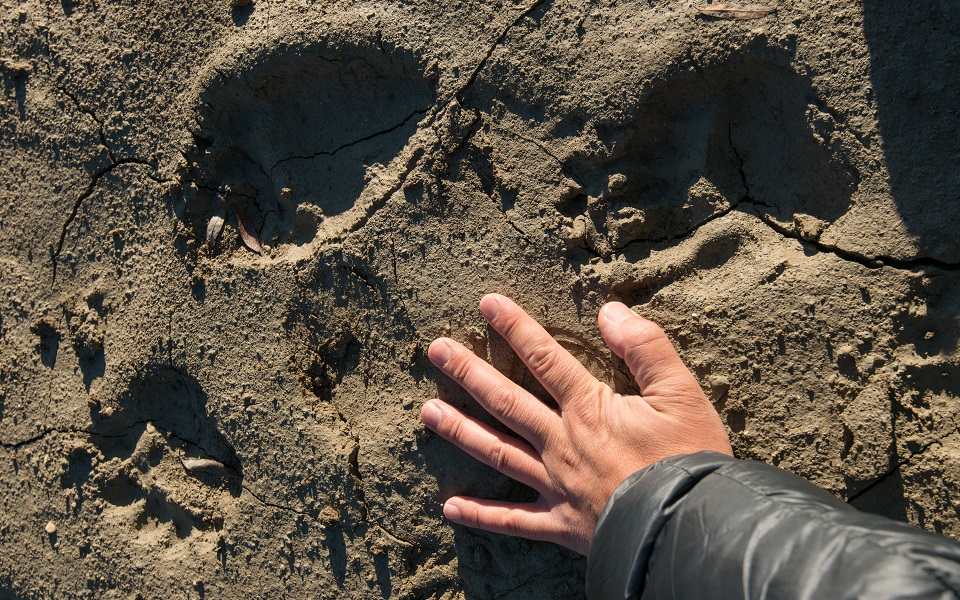
Half an hour later, a lemon yellow light flickers, and then another, the only unnatural sight to contrast with a billion stars overhead. We were somewhere even wilder than where we were
before. The light comes into perspective as we near and a door is thrown open where a wood fire crackles and a three-course meal of pasta, lentils, chicken, broccoli and waffles – and tempranillo – awaits. I had never been anywhere so remote. At night it was cold but I was satisfied and cosy enough that I slept, leaving our hunter pals to take on consciousness in the vast darkness beyond.
The overnight refuge was a once-in-a-lifetime experience, and we were to try more hikes the following days, each as mindful as the last. More often than not, I found it easier than I normally would to feel present, to keep my mind being flooded with chaotic information like it is back home. We’d hear a woodpecker, or see an eagle, and break our pact of silence for a brief moment.
A final morning trek had us surveying the usual spots – open plains, fruit trees, mountaintops – for bears. We saw claw marks, bear hairs from where they rub against trees like Baloo in The Jungle Book and we even saw fresh scat. But we weren’t to come face-to-face with a Marsican brown.
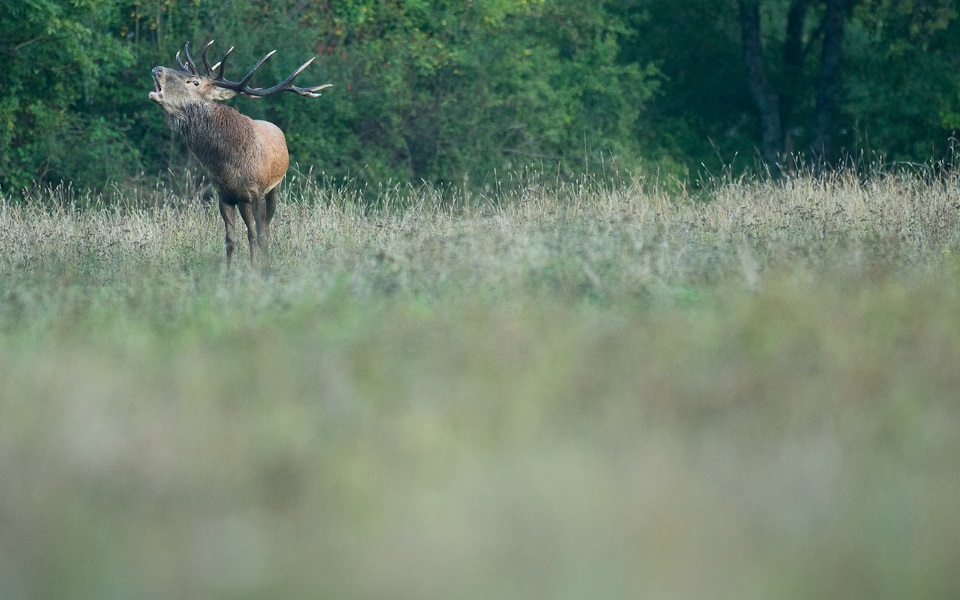
As the trip went on, the idea of seeing one felt increasingly superficial. The thrill of the possibility of seeing a bear was exciting, but now I was part of their world. They were no longer some exotic creature with the sole job of dancing around for me to take photos of: it was apparent that they are an everyday part of this amazing mountain range and the true reward was spending three or four days here rethinking everything I’d ever known about the wild outdoors. It was – to rely on that overused sentiment – about the journey.
This Rewilding Adventure in Italy’s Abruzzo Mountains is one of hundreds of hiking holidays run by Much Better Adventures. They are hoping to build the world’s most positive impact travel company, and offer more than 150 adventures in over 60 countries with 5% of revenues supporting conservation projects.
Adam went on the Rewilding Adventure in Italy’s Abruzzo Mountains, costing £850 per person for four nights. Price includes accommodation, expert guides, breakfast and dinner, and equipment like binoculars. The next bear watching trips run from 3rd May and 28th June, with trips running until October.
Read more from City A.M. Travel
